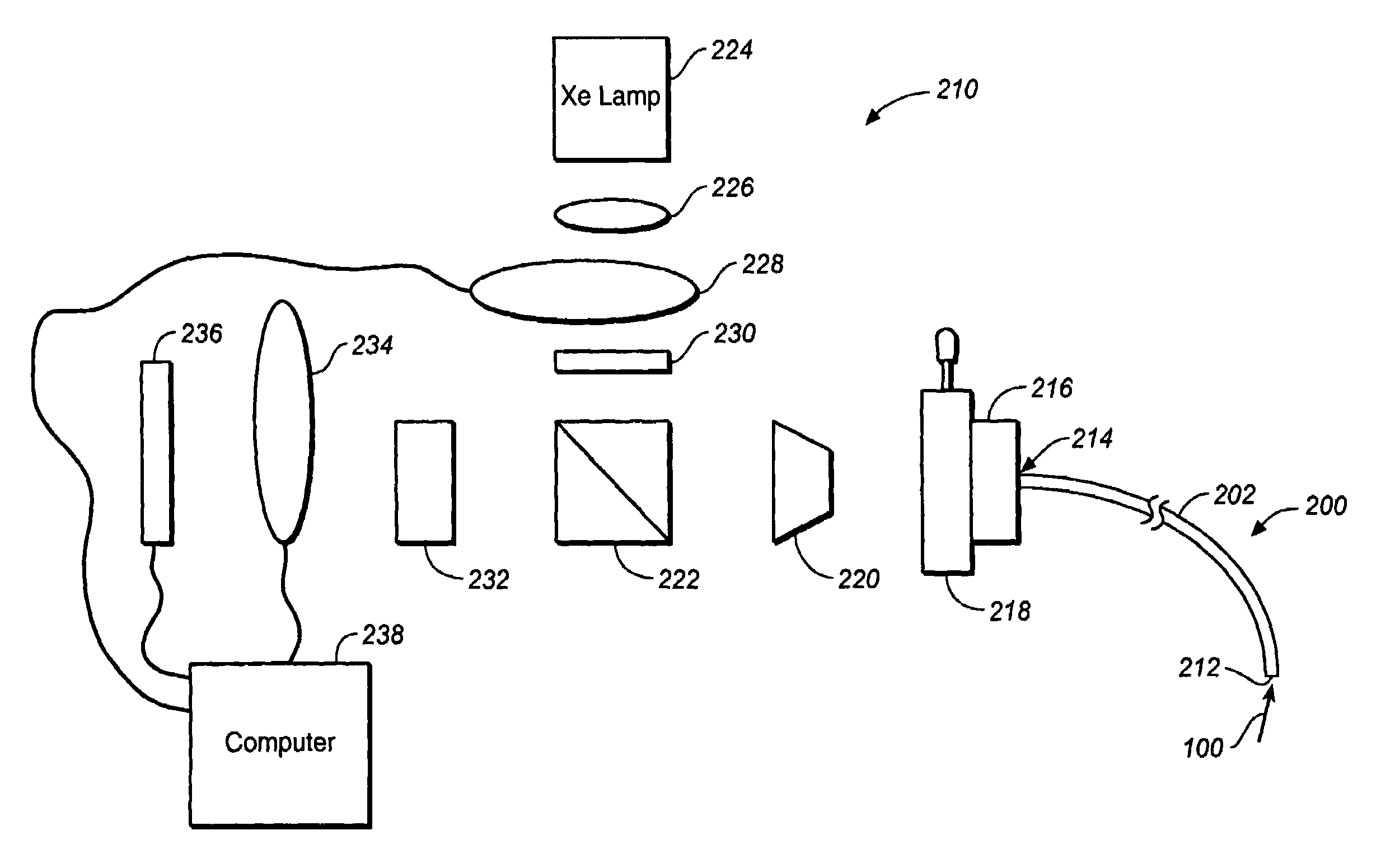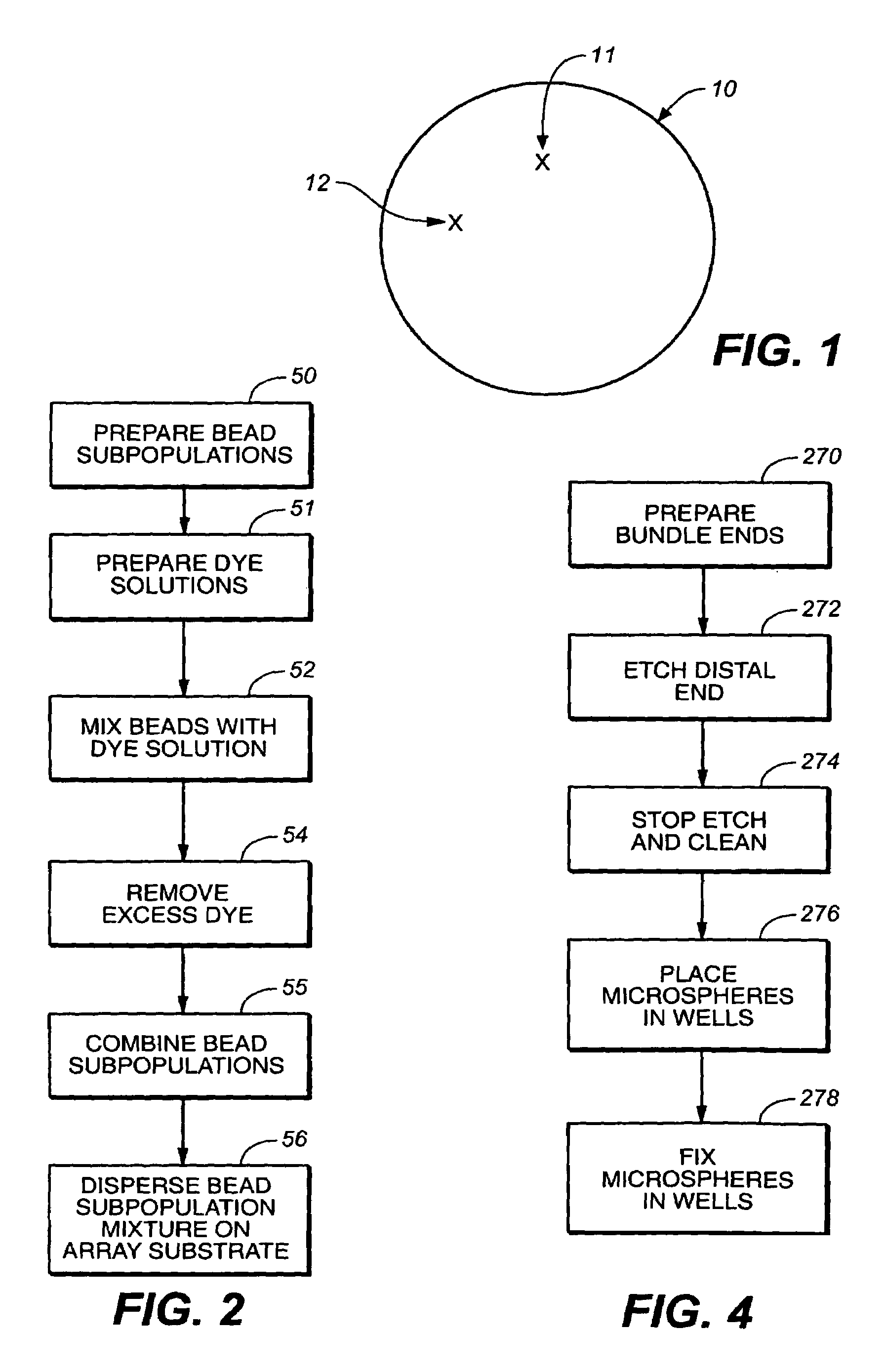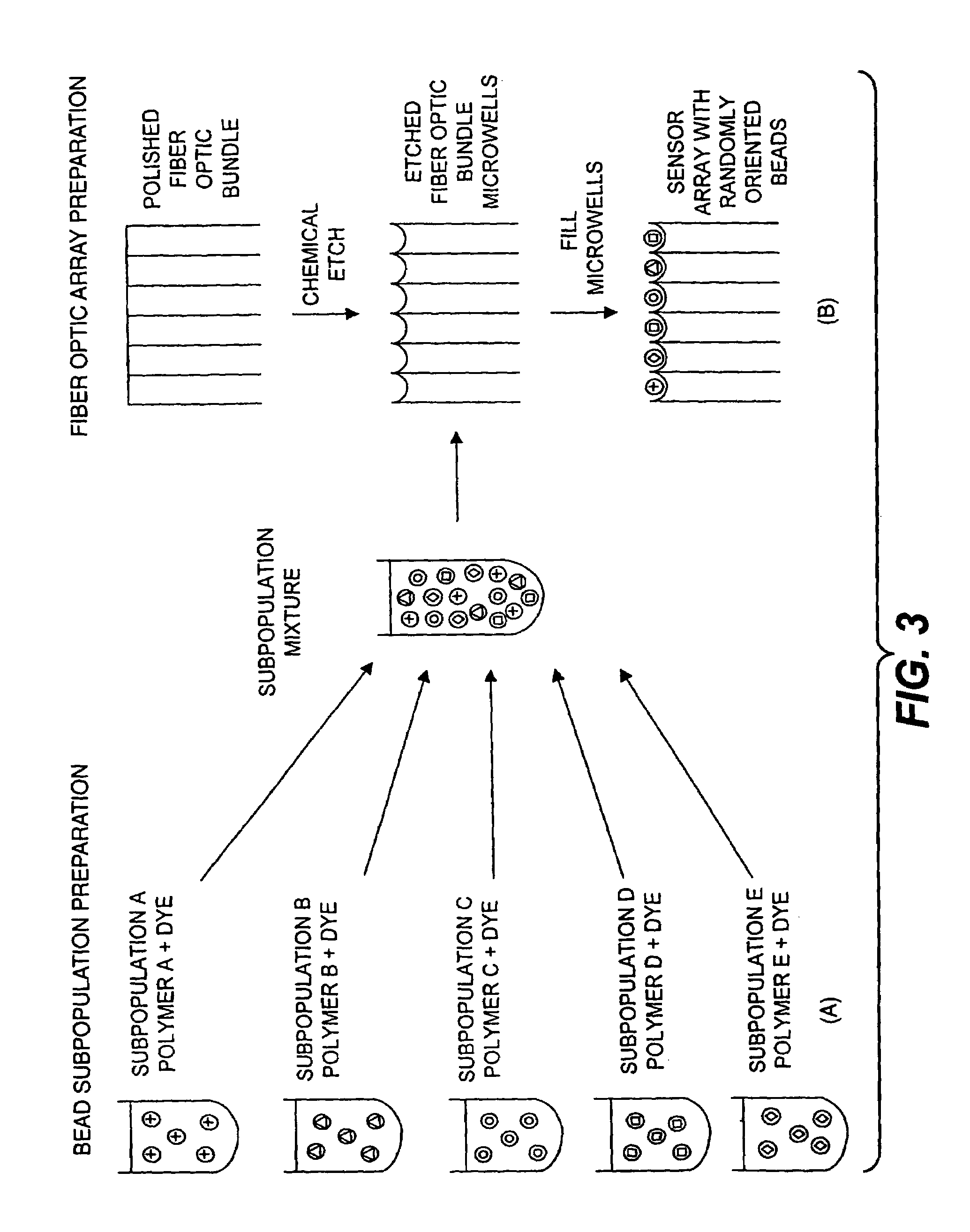Self-encoding fiber optic sensor
a fiber optic sensor and self-encoding technology, applied in the field of chemical sensors, sensor arrays and sensing devices, can solve the problems of limiting the efficacy of such devices, requiring recalibration and network retraining, and unsatisfactory element-to-element reproducibility between sensor arrays
- Summary
- Abstract
- Description
- Claims
- Application Information
AI Technical Summary
Benefits of technology
Problems solved by technology
Method used
Image
Examples
example 1
Preparation of Porous Silica NILE RED Dye Beads:
[0098]Approximately 0.5 cm3 of nominally 3.2 micro meters diameter commercial porous silica beads were removed from a LUNA column (Phenomenex, Torrance, Calif.). Sample of beads were placed onto a filter paper and, using vacuum filtration, 0.5 mL of NILE RED dye (Eastman Kodak, Rochester, N.Y.) solution (1 mg / mL in toluene) was poured over beads. NILE RED dye was immediately taken up by silica beads, turning them a deep purple color. The beads were washed repeatedly with toluene to remove any excess, non-adsorbed NILE RED dye. The beads were dried on a watch glass overnight. Beads were then placed into microwells formed by etching a fiber optic bundle according to the method of the present invention.
example 2
Preparation of PDPO Polymer Coated Porous Silica Beads:
[0099]A silanizing solution was prepared from 20 μL N-octadecyl-triethyoxysilane in 980 μL of ethanol / water (95% ethanol, 5% ultrapure water with pH adjusted to 4.9 with acetic acid). The LUNA porous silica beads of Example 1 were dispersed in an excess of silanizing solution for approximately 10 minutes, vortexing continuously. The particles were rinsed three times with ethanol and dried in a 120° C. oven, overnight for approximately 12 hours.
[0100]Stock solution of PDPO, poly(2,6-dimethyl-1,4-phenylene oxide),(Aldrich, Milwaukee, Wis.) and Nile Red was prepared from 0.09 g PDPO and 1.0 mL chloroform. After complete dissolution of the polymer, a 100 μL aliquot of 1 mg / mL NILE RED dye in chloroform was added. The resultant solution was vortexed continuously for uniform dispersion.
[0101]Excess PDPO / NILE RED dye was added to a small fraction of the silanized porous beads, approximately 100 μL polymer / dye solution to approximately ...
example 3
Preparation of Non-Porous Silica / NILE RED Dye Beads Coated With Polysiloxane Polymer:
[0102]Commercially available non-porous 3.1 Nm silica beads (Bangs Laboratory, Fishers, Ind.) were first silanized in excess silanizing solution, a 10% solution by volume of 3-(trimethoxysilyl)propyl methacrylate (Aldrich, Milwaukee, Wis.) in acetone, overnight. Excess silanizing solution was decanted and the beads were rinsed repeatedly, two to three times, with ultrapure acetone, vortexing and centrifuging between washes. The beads were soaked in excess NILE RED dye solution (1 mg / ml in toluene) for approximately 3 hours while vortexing so as to fully saturate the surface. The bead solution was centrifuged and excess dye solution was decanted. A mixture of 7.9 mg benzoin ethyl ether (Polysciences Inc., Warrington, Pa.), 250 microliters stock Ni RED dye in toluene and 250 microliters (15–20% acryloxypropyl-methylsiloxane) 80–85% dimethylsiloxane copolymer (Gelest Inc., Tullytown Pa.) were then adde...
PUM
| Property | Measurement | Unit |
|---|---|---|
| sizes | aaaaa | aaaaa |
| sizes | aaaaa | aaaaa |
| time | aaaaa | aaaaa |
Abstract
Description
Claims
Application Information
 Login to View More
Login to View More - R&D
- Intellectual Property
- Life Sciences
- Materials
- Tech Scout
- Unparalleled Data Quality
- Higher Quality Content
- 60% Fewer Hallucinations
Browse by: Latest US Patents, China's latest patents, Technical Efficacy Thesaurus, Application Domain, Technology Topic, Popular Technical Reports.
© 2025 PatSnap. All rights reserved.Legal|Privacy policy|Modern Slavery Act Transparency Statement|Sitemap|About US| Contact US: help@patsnap.com



